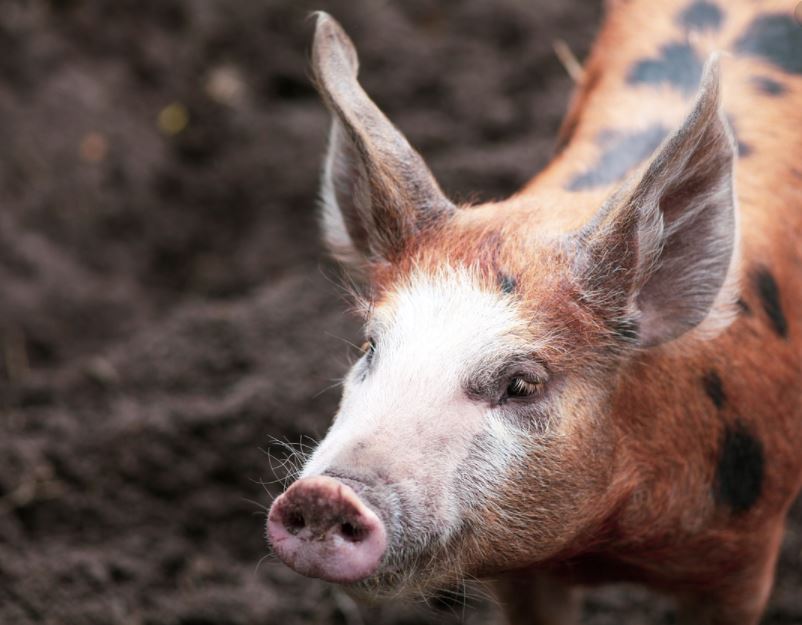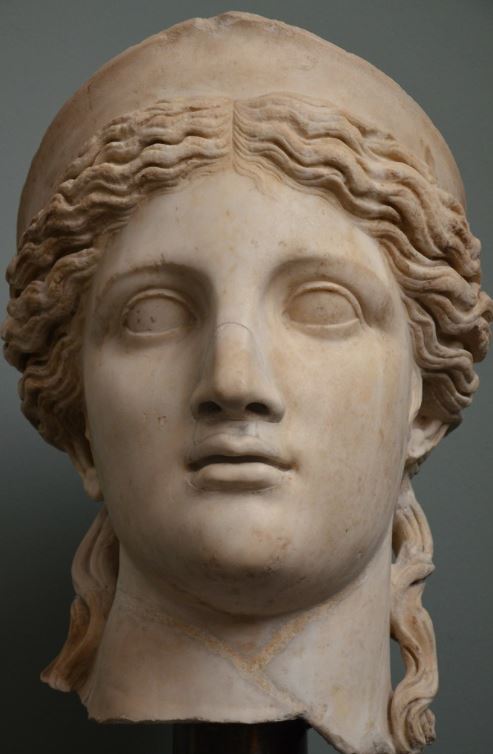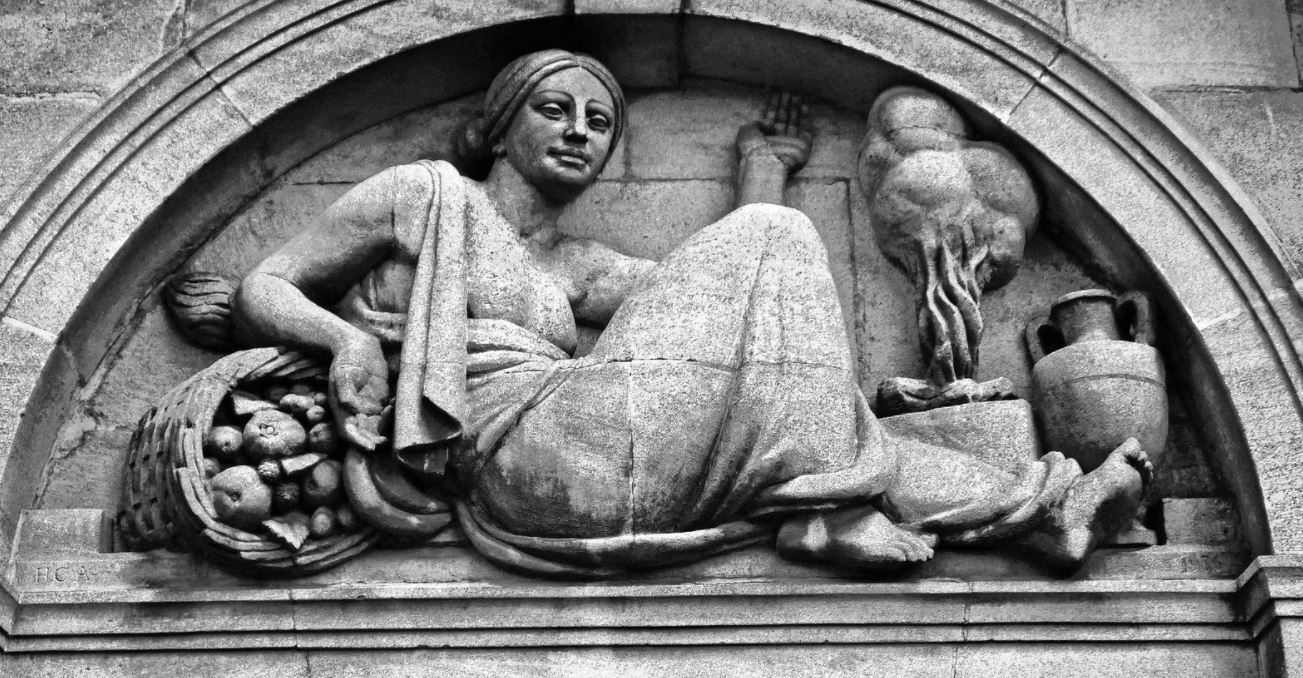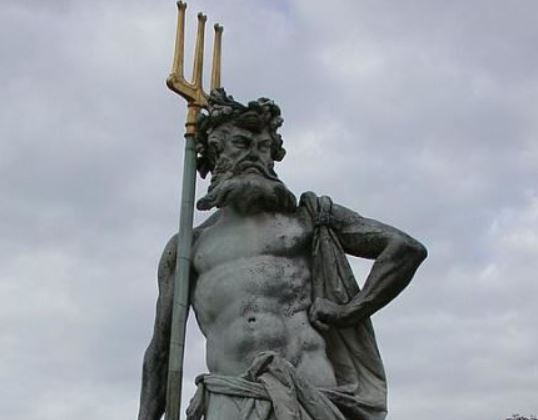The Kind Roman Goddess Ceres of Agriculture

The Roman goddess Ceres is one of those goddesses that one just can’t find fault with.
Her worship was such that she was integral to the day-to-day affairs of the ancient Romans.
Whereas other gods were prayed to for specific things or worshiped on specific days, the Roman goddess Ceres was relevant throughout the year.
Ceres was the goddess of agriculture, farming, and a host of other things which are related to or symbolized by crops. She was the goddess that directly ensured that the people had something to eat.
Without the Roman goddess Ceres good graces, winter and famine were upon the Romans. Luckily, she was also the least capricious and most benevolent of her godly siblings.
Ceres Roman goddess of agriculture: Origin of her name
The name of the Roman goddess Ceres is likely a descendant of the Proto Indo-European word, “kers”, which translates to “to nourish”.
She is also seen to be the Roman counterpart of the Greek goddess, Demeter, and many of the myths and tales of that goddess has been reused by the Romans in their art and literature.
She is also one of many agricultural gods worshiped by the Roman and is often depicted with a host of “helper gods” that each represents some of the aspects of farming.
History of the Roman goddess of agriculture and her Myth
The harvest goddess Ceres is probably one of the oldest gods to be worshiped by the Romans and their precursors. As far back as 600 BC inscriptions are found invoking her name to bring forth a good harvest.
In terms of her myths, Ceres Roman goddess is attributed as being the daughter of Saturn, sister to Jupiter, and one of the original six gods that rebelled against their father and took control of the cosmos, bringing order and ending the rain of the titans.
Through Jupiter, Ceres bore a daughter names Proserpina, goddess of the seasons.
A statue of Ceres Roman goddess of agriculture
Roman goddess Ceres and the abduction of her daughter
Perhaps her most famous myth concerns the abduction of her daughter by Pluto the god of the Underworld.
Pluto desired a bride and, with the help of Jupiter, manages to abduct Proserpina and take her to his kingdom in the underworld.
The goddess Ceres, very distraught, would search far and wide for her daughter. In her sadness and grief, she plunged the world into winter. No crops would grow, no trees or bushes bore any fruit, and the people of the world were threatened with starvation.
All the gods tried to console her but to no avail. Eventually, Jupiter conceded that the Roman goddess Ceres’ daughter had to be returned to her if the world is to survive. Pluto had to agree but before he let Proserpina go, he gave her pomegranates to eat.
Having tasted of the fruits of the underworld meant that Proserpina was part of it. This, in turn, meant that to placate both her mother and Pluto, Proserpina had to divide her time each year between the two.
The exact time differs depending on tradition but the time that Proserpina has to descend to the underworld coincides with winter, when Ceres, the Roman goddess of agriculture refuses to let anything grow until her daughter is returned which coincides with spring.
The myth serves as a way for the ancient people to understand the turning of the seasons and the best time to plant crops.
Ceres goddess powers and role
As stated, Ceres was the goddess of agriculture and the protector of plebians, farmers, and all those that worked with grain.
This means that she was directly responsible for ensuring that the soil is fertilized, seeds grow into crops, and trees bear fruit.
She was also the goddess of motherly relationships and fertility. Under her jurisdiction were the laws of marriage and the insurance of a woman’s fertility.
The Roman goddess Ceres law-bearing persona also extends to the laws which protect plebian from unjust actions. To her, the farmers prayed for protection and just treatment.
Just like other goddesses like Juno, the Roman goddess of agriculture Ceres was also the protagonist of a festival called the Cerealia.
It was celebrated around mid-April, often entails spilling some grain onto the floor. The goddess Ceres was also worshiped during the beginning of each year which coincided with the sowing of the grain.
Ceres symbols and their Meaning
The Roman goddess Ceres is often depicted as a young woman around child-bearing age. She is sometimes also portrayed as a matronly lady, a signifier of her role as a mother goddess.
Ceres goddess symbols were the pig, wheat, cornucopia, and lotus staff.
Ceres goddess symbol: the torch and the farming tools
Ceres, the Roman goddess of agriculture was also commonly depicted carrying a torch, an allusion to her time searching for her missing daughter as well as her role and light-bringer.
She is also sometimes depicted holding a scepter or farming tools in one hand and a basket of products in the other.
The torch, one of Ceres goddess symbols
Ceres goddess symbol: the pig
Her worship sometimes consisted of live sacrifices of pigs or sows, but it is also said that some scattered grain is good enough for her too. So long as the sacrifice is pure, it is said that the Roman goddess Ceres is content with little.
The pig: one of Ceres symbols
The Empress of Rome also held deep ties to the goddess Ceres, again due to the motherly nature and womanly virtues ideal in the former and represented in the latter.
Towards the latter part of the history of the empire, Ceres’ role saw an expansion to include the title of Magna Mater, the Great Mother. This was a testament to her importance in ancient Roman religion and saw worship throughout the empire.
In her role of showing people how to grow crops, she was attributed as the mother of civilization and the bringer of order and peace to humans.
Additional Ceres goddess facts:
Here are some bits of information about the Roman goddess Ceres:
- The word “cereal” derives from her name.
- A dwarf planet is named after her as well as the element, Cerium.
- The Roman goddess Ceres is a character in The Tempest by William Shakespeare.
- She is depicted in the Seal of New Jersey as a symbol of prosperity.
The seal of the state of new jersey where the Roman goddess Ceres appears
- Ceres’ statues, images, and symbolism are seen in numerous government buildings around the world. Especially in agencies that deal with crops, agriculture, and husbandry.
- Trivia, goddess of witchcraft and herbalism, was the one to tell the harvest goddess Ceres of the fate of her daughter
- Demeter was the Greek equivalent of Ceres. She was also worshiped alongside the earth goddess Tellus













